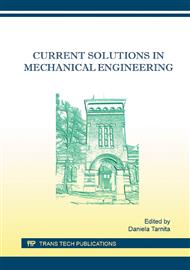p.161
p.167
p.173
p.181
p.187
p.193
p.199
p.205
p.211
Vehicles’ Passive Safety Systems Influence on Driver’s Thorax Injuries
Abstract:
The present underpins a computer-assisted investigation regarding the driver’s behavior and the injuries suffered in frontal vehicle collision, more precisely the injuries suffered in the thorax area. Hence, by means of the LS-Dyna software package we have carried out two series of virtual simulations with a dummy positioned on the driver’s place, i.e. belted and unbelted. For the simulation we have selected a Hybrid III 5th percentile female dummy. Aiming at achieving a simulation that would display a high accuracy degree with respect to the driver’s kinematic behaviour at the impact moment, our complete model also included, besides the dummy, the elements in the habitable: the seat, the seat belt, the steering wheel, the airbag and the dash board. Thus, the focus of the undertaken study was to establish the accelerations in the driver’s thorax area as well as the injury degree, expressed by the CSI (Chest Severity Index). The results obtained validated our hypothesis in that passive safety systems, i.e. the seat belt, diminish considerably the driver’s injuries degree in case of a road traffic accident.
Info:
Periodical:
Pages:
187-192
Citation:
Online since:
January 2016
Authors:
Keywords:
Price:
Сopyright:
© 2016 Trans Tech Publications Ltd. All Rights Reserved
Share:
Citation:


